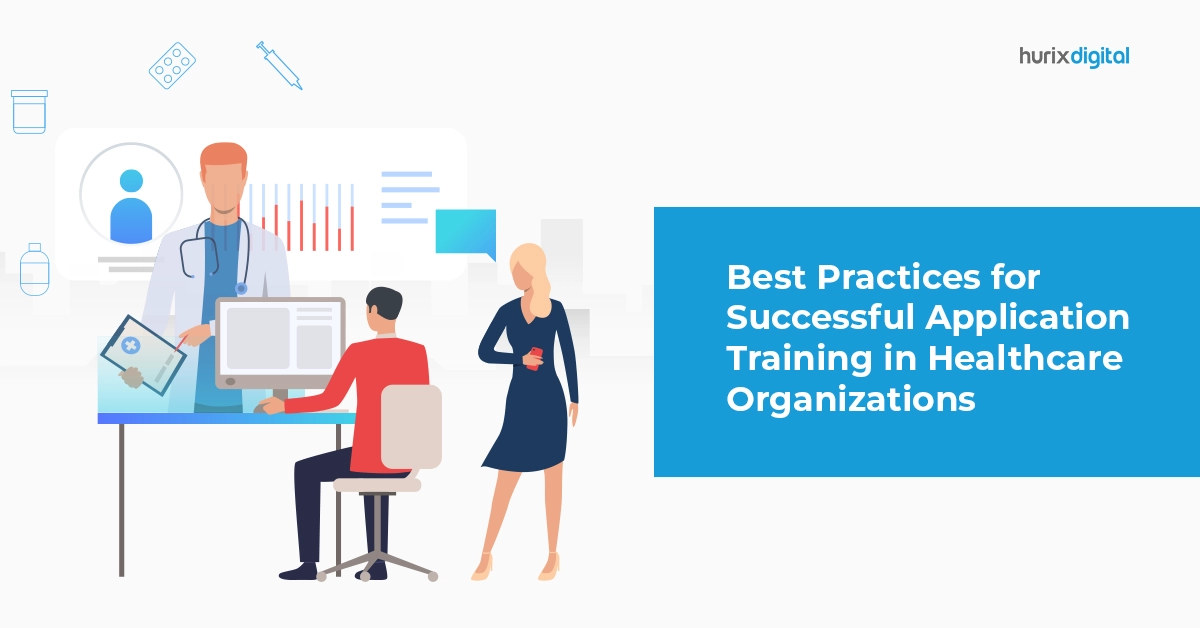In the rapidly evolving landscape of Information Technology, staying abreast of the latest tools and technologies is not just an advantage but a necessity. This is where effective application training programs play a pivotal role. These courses are tailored to equip IT professionals with the skills and knowledge required to excel in their roles. In this blog post, we’ll delve into some of the key considerations while designing training programs, focusing on IT workforce training and the nuances of crafting an impactful application training course.
Table of Contents:
- What is Application Training?
- Why is Application Training Important for IT Companies?
- Is it Easy to Design Effective Application Training Courses for the IT Workforce?
- 8 Key Considerations for Designing Application Training Courses for IT Companies
- Benefits of Following Effective Application Training Courses
- Conclusion
What is Application Training?
Application training is a specialized form of education aimed at familiarizing individuals with specific software applications. It encompasses a structured curriculum ranging from basics to advanced features, ensuring learners gain a comprehensive understanding of the application’s functionalities. Application training courses are typically designed to be hands-on, enabling participants to gain practical experience and making them proficient users.
Why is Application Training Important for IT Companies?
The importance of application training in the realm of IT cannot be overstated. It serves as the cornerstone for IT professionals to navigate through the intricacies of various software applications. With the ever-changing technological landscape, proficiency in specific applications can make a significant difference in the efficiency and productivity of an IT team.
Moreover, it enhances adaptability, enabling professionals to integrate new tools into their workflow quickly. This not only improves their performance but also contributes to the overall competitiveness and agility of the organization.
Is it Easy to Design Effective Application Training Courses for the IT Workforce?
Designing effective application training courses for IT professionals requires a nuanced approach. It’s not merely about disseminating information; it’s about ensuring that the knowledge is absorbed and applied in a practical context. This demands a deep understanding of the subject matter and expertise in instructional design and adult learning principles.
Also Read: Top 8 Factors to Consider During eLearning Content Development
Let us look at 8 important aspects we must consider while designing application training courses for IT companies.
8 Key Considerations for Designing Application Training Courses for IT Companies
1. Accurate Needs Assessment:
A thorough needs assessment is crucial before diving into course design. This involves identifying the specific skills and knowledge gaps within the IT workforce and the specific product/software knowledge and competencies that need to be imparted. Understanding the unique requirements of the learners ensures that the training program is tailored to address those precise needs.
2. Clear Learning Objectives:
Define clear, specific, and actionable learning objectives for the course. SMART objectives, that is, Specific, Measurable, Achievable, Relevant, and Time-bound objectives can provide a solid framework for designing application training programs. These objectives are predetermined, measurable outcomes the trainees should achieve at the end of a training program. Therefore, they serve as a roadmap, guiding both the instructional design process and the learners’ progress throughout the training program. Typically, objectives are knowledge-based (imparts knowledge, facts, etc.), skill-based (focuses on practical abilities and competencies), and attitude-based (shapes attitudes and beliefs around aspects of work). Determining the nature and type of objectives will help design the course. Ideally, the course should empower all types of learners: visual, auditory, and kinesthetic.
3. Engaging Content and Instructional Methods:
To capture the attention and maintain the interest of IT professionals, the content and instructional methods must be engaging and interactive. Incorporate a variety of media, such as video tutorials, simulations, and hands-on exercises. Online training videos, e-learning, and blended learning (combines online independent learning with virtual instructor-led learning) will prove to be both efficient and cost-effective. Adaptive learning features that enable trainees to begin training at the level appropriate for their knowledge and skills and gamification, with dynamic interfaces, rules, level badges, and leaderboards that track progress, can attract and engage trainees and enhance knowledge retention because multiple senses are involved.
4. Practical Application:
Application training thrives on hands-on experiences. Provide opportunities for learners to apply their knowledge in realistic scenarios. This allows trainees to make mistakes in a safe environment and makes room for course correction. This also reinforces their understanding and builds confidence in using the application effectively. Practical application also gives trainees more control over what they learn, which is a huge positive for trainees.
5. Feedback and Assessment:
Regular feedback and assessments are integral to a successful training program. They offer insights into the learners’ progress and enable necessary adjustments to the course content or delivery methods. Periodic tests, online assessments, projects, and quizzes are typical ways of gauging the trainees’ retention and tracking their progress. They also indicate areas for improvement the trainer can address seamlessly, all this while motivating the learners all the way.
6. Flexibility and Adaptability:
The IT landscape is dynamic, with new tools and technologies emerging frequently. Design the training program with flexibility in mind, allowing for updates and adaptations to cater to evolving needs.
7. Accessibility and User-Friendliness:
Ensure that the training materials and platform are accessible to all learners, regardless of their level of expertise. A user-friendly interface and clear navigation contribute to a seamless learning experience. The program should be accessible to all types of learners: visual (who read and absorb content), auditory (who listen and learn), and kinesthetic (who learn through hands-on practice) using multiple types of devices (mobile phone, tablet, laptop).
8. Continuous Evaluation and Improvement:
The journey doesn’t end with completing the training program. Continuously evaluate its effectiveness through feedback, pre-and post-training assessments, application (of the training) on the job, and performance metrics. Use this information to make improvements for future iterations. When the objectives are clear and measurable, the effectiveness of training – in terms of the development of skills, gain in knowledge, and change in attitude – will become evident.
Also Read: Key Elements in Workplace Course Development
Benefits of Following Effective Application Training Courses
Implementing well-designed IT training programs yields many benefits. It not only enhances the skills and capabilities of the workforce but also translates into tangible business outcomes. Increased productivity, reduced errors, quicker adoption of new technologies, and improved job satisfaction are just a few of the positive impacts.
Conclusion
In conclusion, crafting effective application training courses for IT companies is a meticulous process that demands careful planning and execution. By considering the unique needs of the IT workforce and adhering to the key considerations outlined above, organizations can ensure that their training programs yield maximum value.
If you’re looking for a partner in developing custom IT training solutions, consider contacting Hurix Digital via email at marketing@hurix.com. With their expertise in instructional design and technology-enabled learning, they can assist in creating tailored training programs that empower your IT professionals to excel in their roles.











